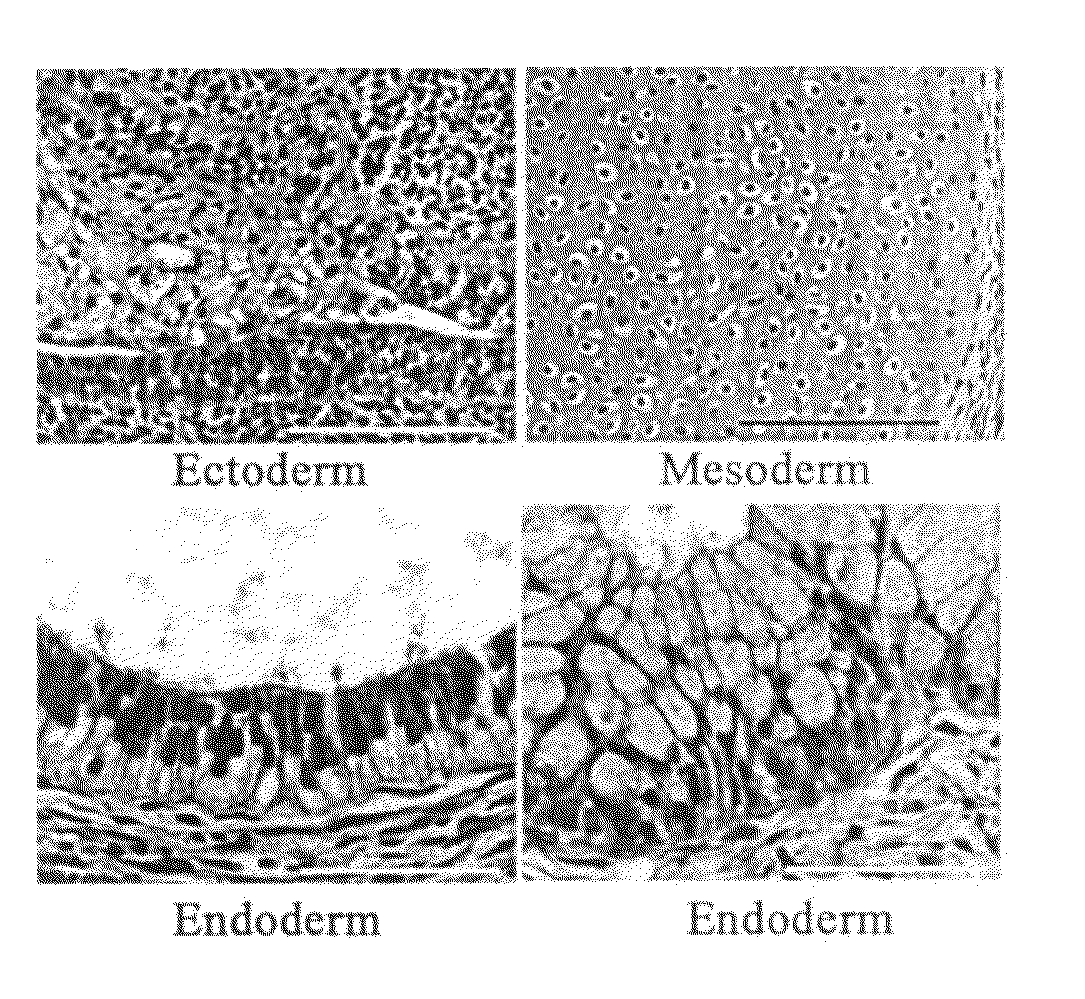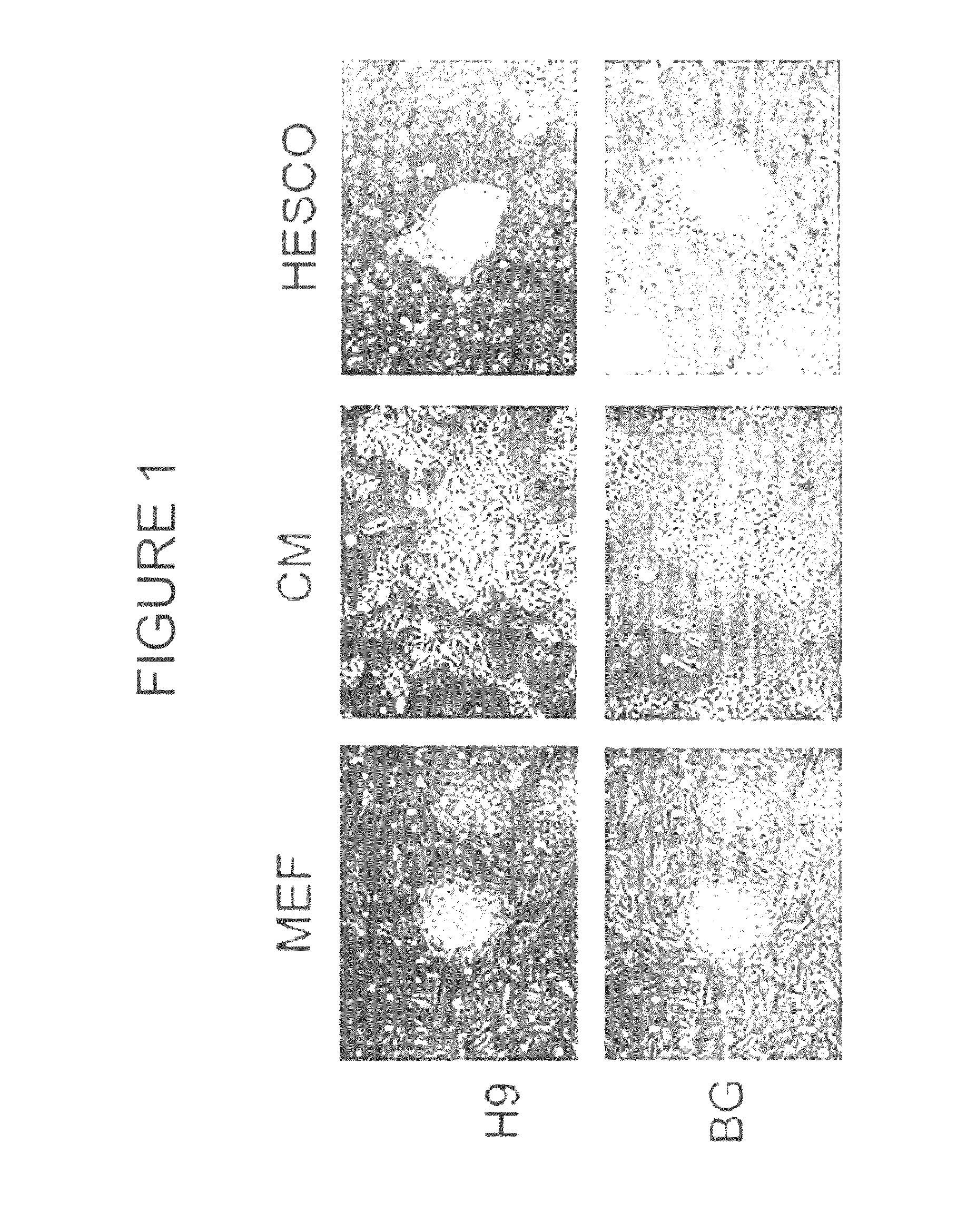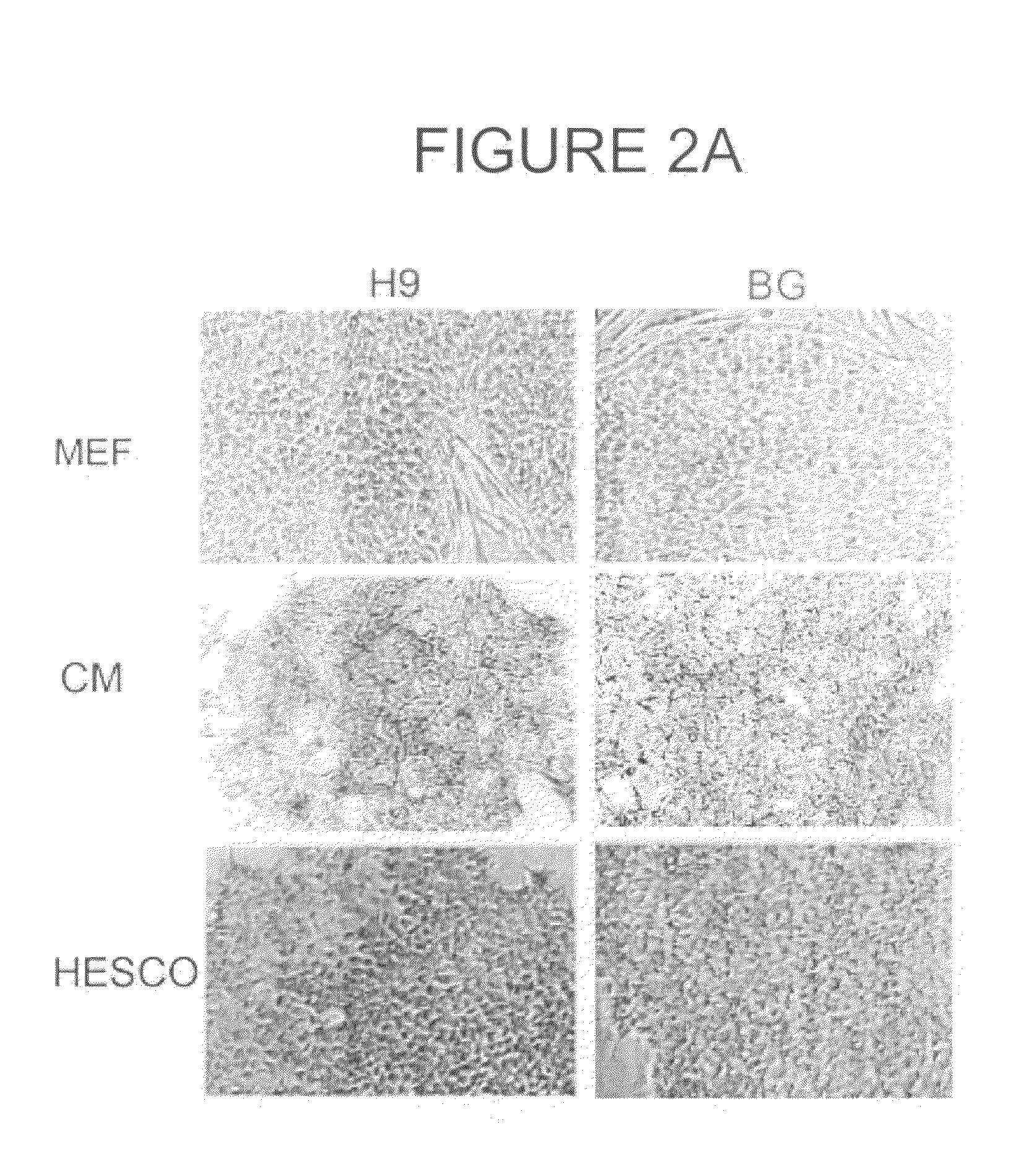Defined Culture Conditions of Human Embryonic Stem Cells
a technology of embryonic stem cells and culture conditions, which is applied in the field of defined culture conditions of human embryonic stem cells, can solve the problems of endangerment of recipients, rejection upon transplantation, and increased risk of contamination by animal pathogens by animal products
- Summary
- Abstract
- Description
- Claims
- Application Information
AI Technical Summary
Benefits of technology
Problems solved by technology
Method used
Image
Examples
experimental examples
[0178]The invention is further described in detail by reference to the following experimental examples. These examples are provided for purposes of illustration only, and are not intended to be limiting unless otherwise specified. Thus, the invention should in no way be construed as being limited to the following examples, but rather, should be construed to encompass any and all variations which become evident as a result of the teaching provided herein.
experimental example 1
Medium Containing Minimal Components Supports HESC Growth
[0179]The materials and methods used in this example and the following examples are now described.
[0180]Cell Culture: Two hESC lines, H9 (Wicell Research Institute, Madison, Wis.) and BG01 (BresaGen, Athen, Ga.), were initially cultured in Dulbecco's Modified Eagle's Medium / Nutrient Mixture F-12 Ham's (DMEM / F12) and supplemented with 20% Knockout™ serum replacement, 1 mM L-glutamine, 1% non-essential amino acid, and 4 ng / ml human basic fibroblast growth factor (bFGF) (all from Invitrogen, Carlsbad, Calif.), and 0.1 mM 2-mercaptoethanol (Sigma, St. Louis, Mo.). CF-1 mouse embryonic fibroblasts (MEF) were used as the feeder cells (Chemicon, Temecula, Calif.). Conditioned medium (CM) was prepared using MEF as described previously (Thomson et al., 1998, Curr Top Dev Biol 38: 133-65; Xu et al., 2001, Nat Biotechnol 19: 971-4; Zeng et al., 2004, Stem Cells 22: 292-312).
[0181]All hESC experiments were performed between passages 25-60...
experimental example 2
hESCs Cultured in HESCO Exhibit Normal Cell Morphologies
[0192]To determine whether hESCs grown in HESCO culture medium were maintained in an undifferentiated state, a variety of tests were used. The morphology of two hESC lines, H9 and BG01, cultured in HESCO culture medium or conditioned medium for greater than 2 months (8 passages) was examined. Fibronectin and matrigel from at least 6 different lots were tested and gave consistent results. Unlike the elongated cells observed in conditioned medium, hESCs cultured in HESCO were more condensed and had a high nucleus to cytoplasm ratio similar to cells cultured on feeder cells (FIG. 1). Importantly, hESCs cultured in HESCO did not have the differentiated cells surrounding the hESC colonies (FIGS. 1 and 2). This result is in contrast to most feeder-free culture conditions currently used (Xu et al., 2005, Stem Cells 23: 315-23; Li et al., 2005, Biotechnol Bioeng 91: 688-98). As negative controls, species-matched IgG and IgM were used t...
PUM
| Property | Measurement | Unit |
|---|---|---|
| mole fraction | aaaaa | aaaaa |
| mole fraction | aaaaa | aaaaa |
| mole fraction | aaaaa | aaaaa |
Abstract
Description
Claims
Application Information
 Login to View More
Login to View More - R&D
- Intellectual Property
- Life Sciences
- Materials
- Tech Scout
- Unparalleled Data Quality
- Higher Quality Content
- 60% Fewer Hallucinations
Browse by: Latest US Patents, China's latest patents, Technical Efficacy Thesaurus, Application Domain, Technology Topic, Popular Technical Reports.
© 2025 PatSnap. All rights reserved.Legal|Privacy policy|Modern Slavery Act Transparency Statement|Sitemap|About US| Contact US: help@patsnap.com



